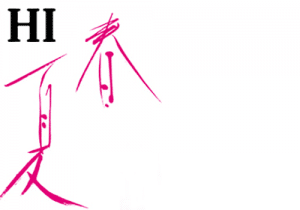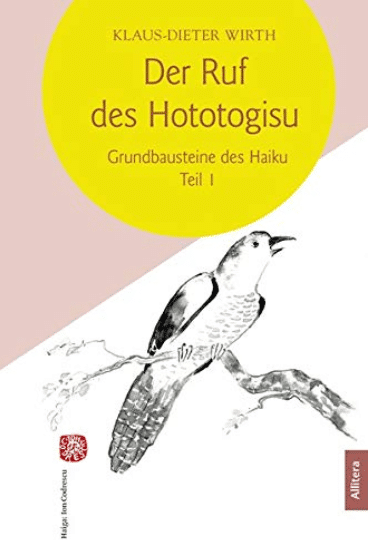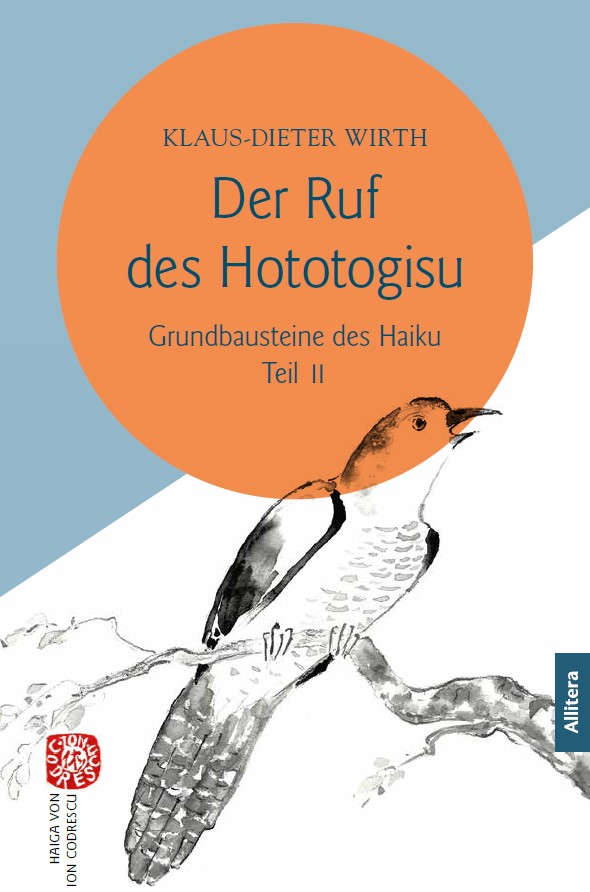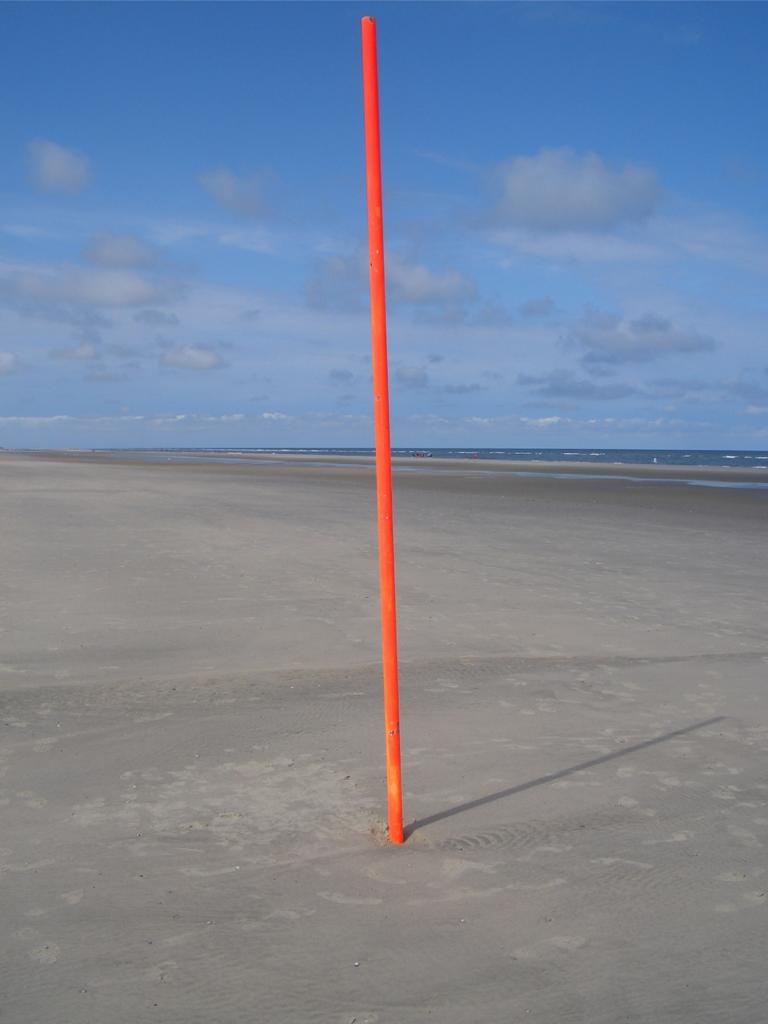Ausgewählte Haiku
 Übersetzungen der Haiku: eine Zusammenarbeit von Emiko Miyashita, Claudia Brefeld und Eva Moering
Übersetzungen der Haiku: eine Zusammenarbeit von Emiko Miyashita, Claudia Brefeld und Eva Moering
»Hier können Idee und Hintergrund zu diesem Projekt nachgelesen werden.
Auswahl und Kommentierung von
KENZO Nomura, HIA Vice President
芭蕉見してふ松に今年の新松子
bashō mishi chō / matsu ni kotoshi no / shinchijiri
Man sagt Basho sah
an der Kiefer die diesjährigen
grünen Zapfen渡辺通子 WATANABE Michiko
Ist es die Kiefer von Takekuma in der Stadt Iwanuma in der Präfektur Miyagi? Sie ist auch als Futaki-Kiefer bekannt und gilt als die meistzitierte Kiefer in der Poesie im Bezirk Mutsu. Die heutige Kiefer ist wahrscheinlich diejenige, die im Laufe der Generationen gepflanzt wurde, aber die Szenerie muss dieselbe sein, die Basho gesehen hatte. Die Autorin fand einen neuen Zapfen an dieser berühmten Kiefer. Es ist, als würde man Bashos Haikai-Philosophie „fueki ryūkō“ beobachten – die Kiefer verändert sich nicht, aber ein neuer Zapfen wird geboren.
雪吊りの縄の弦弾く風の譜か
yukitsuri no / nawa no gen hiku / kaze no fu kana
Partitur des Windes–
zupft an den Schnüren des Seils
hängend im Schnee大高霧海 OHTAKA Mukai
Yukitsuri ist als eine Tradition des Kenrokuen-Gartens in Kanazawa bekannt. Vor allem im verschneiten Land stützen die Säulen die Baumstämme und die Zweige werden in alle Richtungen aufgehängt, damit das Gewicht des Schnees ausgeglichen wird. Die anmutigen Kegel bilden eine geometrische Schönheit vor dem tiefblauen Winterhimmel. Wenn der Wind weht, ist es, als ob die Saiten einer großen Harfe gespielt werden und der Klang der Harfe von irgendwoher zu hören ist.
siehe:
https://www.snowmonkeyresorts.com/activities/kenrokuen-garden/
コードレスイヤフォンぽとり雪深し
kōdoresu / iyahon potori / yuki fukashi
kabellose Ohrhörer
fallen mit einem Plopp
der Schnee ist tief内村恭子 UCHIMURA Kyoko
Man sagt, dass Haiku auf alltäglichen Erfahrungen oder dem, was man mag, basieren sollten. Auch dieses Haiku entstand beim Hören der Lieblingsmusik der Autorin während eines gewohnten Spaziergangs. In letzter Zeit sind kabellose Ohrhörer, die direkt am Ohr getragen werden, sehr beliebt geworden und ermöglichen es den Menschen, zwanglos Musik zu hören. Als sie auf einer verschneiten Straße spazieren ging, löste sich der kabellose Kopfhörer aus ihrem Ohr, aber glücklicherweise konnte sie ihn aus dem Schnee aufheben.
冬の闇 一日灯る電灯 その他はグレーの中のグレー
fuyuno yami / ichinichi tomoru dentō / sonohoka wa gurē no naka no grē
winter darkness
electrical light all day
else grey in greyWinterdunkelheit
den ganzen Tag elektrisches Licht
ansonsten grau in grauハンセン、アナ (デンマーク) HANSEN, Hanne (Denmark)
Es gibt ein saisonales Wort „Winterlicht“. Es bezieht sich auf das Licht während des kalten Winterwetters, nicht unbedingt auf das Licht der kältesten Jahreszeit. Die Lichter, die die Abenddämmerung im Winter begleiten, die Lichter, die die Stadt in der frühen Nacht begleiten, und die Lichter, die den ganzen Tag in der in diesem Haiku beschriebenen Dunkelheit leuchten, haben ein warmes Gefühl gepaart mit Einsamkeit.
Das Werk wird durch die Verwendung „grau in grau“ attraktiv.
地が果てて海が始まる野水仙
chi ga hatete / umi ga hajimaru / nozuisen
Das Land endet
und das Meer beginnt —
Narzisse田中あき子 TANAKA Akiko
Die Narzisse blüht in der kalten Jahreszeit, nicht wie andere Blumen, und erträgt die Kälte. Das ruft ein klares Bild hervor. Wilde Narzissen, die auf den Klippen am Japanischen Meer an der Küste von Echizen in der Präfektur Fukui wachsen, sind weithin bekannt. Der Ausdruck „die Erde endet und das Meer beginnt“ deutet darauf hin, dass sich das Meer der Klippe nähert.
Und hier fünf weitere Haiku – ausgesucht von Emiko Miyashita
石を切る白き山肌浅き春
ishi o kiru / shiroki yamahada / asaki haru
Steinbrechen
auf kahler Bergoberfläche —
Frühlingsanfang相澤正志斎 AIZAWA Seishisai
しゃぼん玉理科室の窓あふれ出て
shabondama / rikashitsu no mado / afuredete
Seifenblasen
fließen über aus dem Fenster
eines Wissenschaftsraums高橋紀美子 TAKAHASHI Kimiko
地下舞台秋思夜光テープの仄明り
chikabutai / shūshi yakōtēpu no / honoakari
Untergrund-Bühne
Herbstmelancholie
Das schwache Glühen des Leuchtbandes松井貴子 MATSUI Takako
難民の行方は何処春の雪
nanmin no / yukue wa izuko / haru no yuki
wohin gehen sie
die Flüchtlinge*?
Frühlingsschnee木下さとし KINOSHITA Satoshi
* Hier sind wohl die ukrainischen Flüchtlinge gemeint
肥後に来て城も街路も樟若葉
higo* ni kite / shiro mo gairo mo / kusuwakaba
nach Higo*
um das Schloss und auf den Straßen
sprießende Kampferbäume小野香久子 ONO Kakuko
* Higo ist ein alter Name der Präfektur Kumamoto auf der Insel Kyushu







